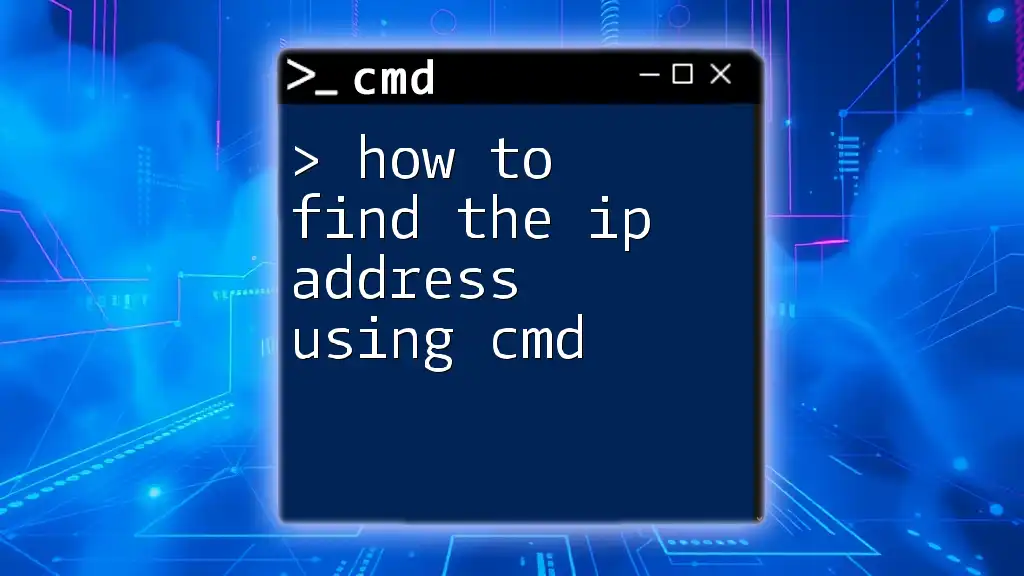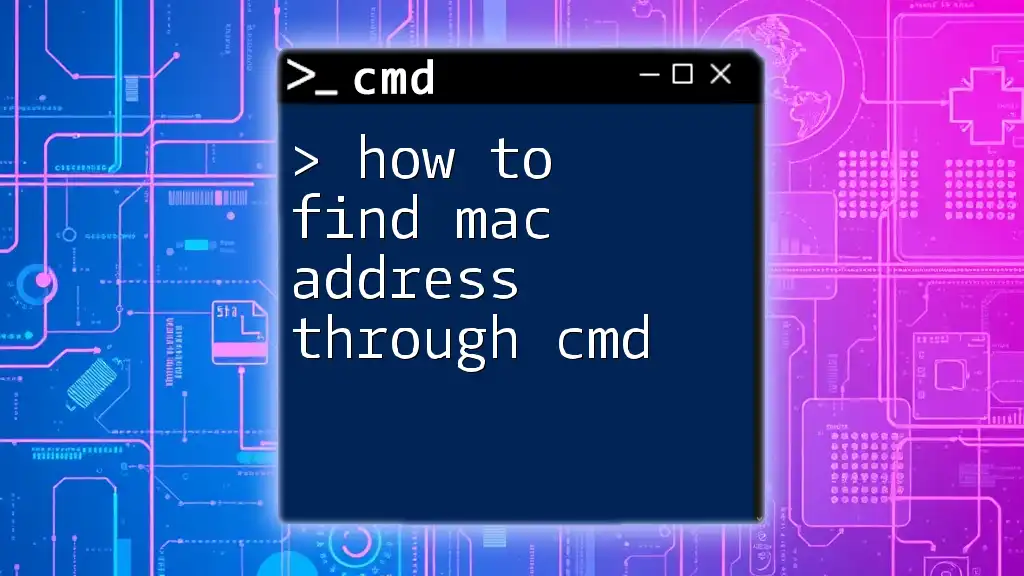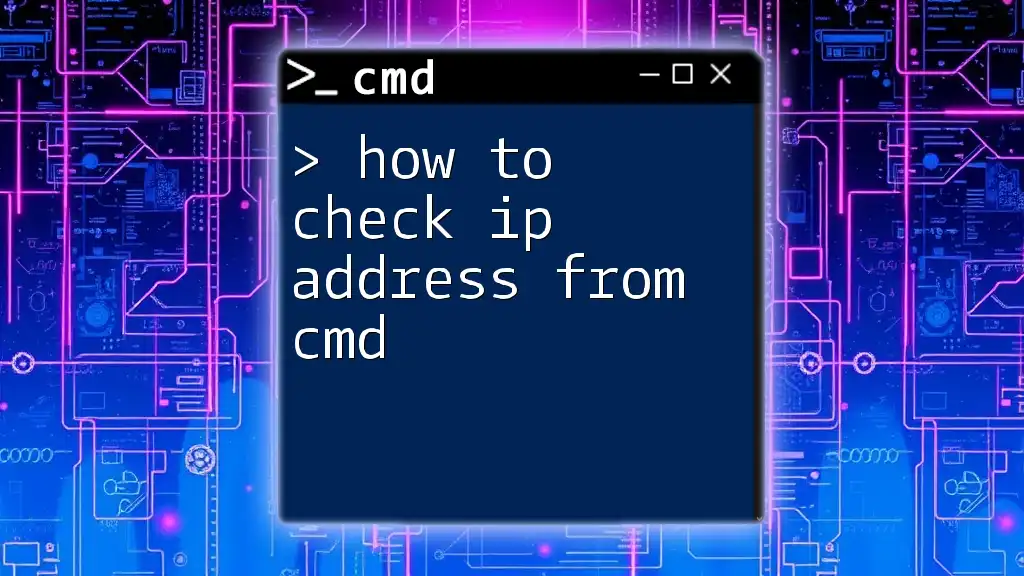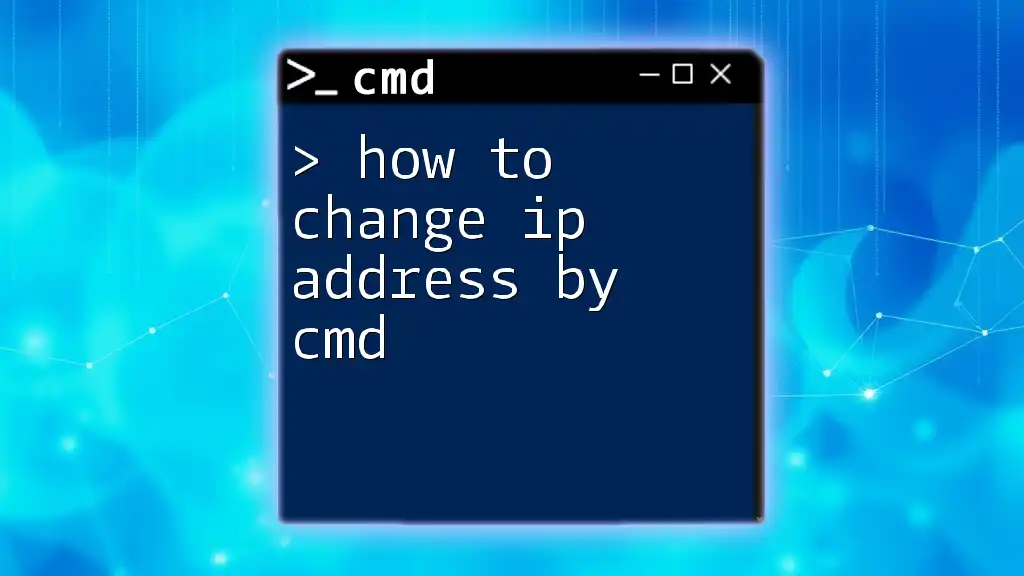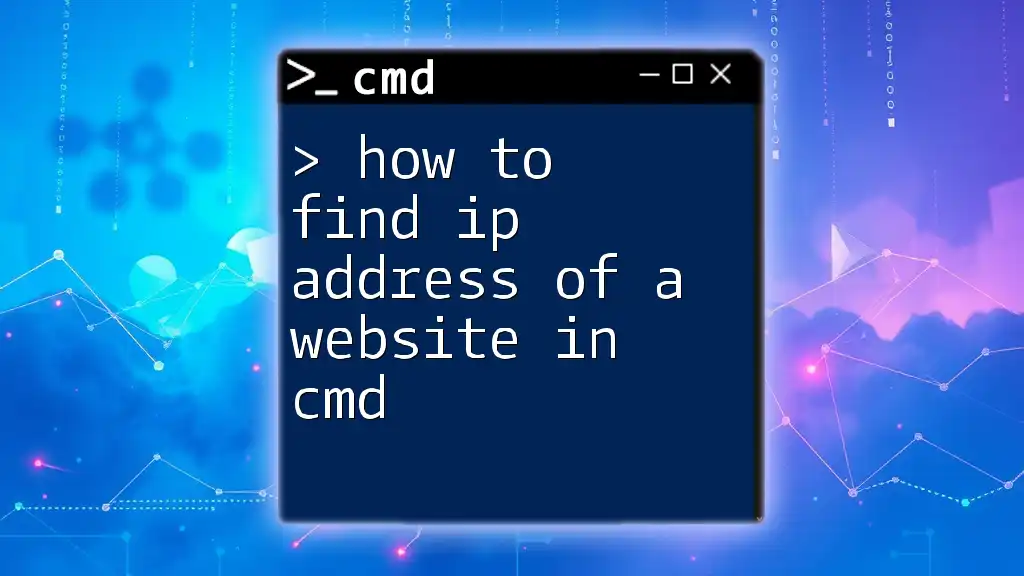To find your IP address using the Command Prompt (cmd), simply type the command `ipconfig` and press Enter. Here's the command in markdown format:
ipconfig
Understanding CMD
What is CMD?
Command Prompt (CMD) is a command-line interpreter available in many Windows operating systems. It allows users to execute commands to perform various tasks, from file manipulation to network diagnostics. CMD is an essential tool for users who want to manage their computer operations efficiently without the need for a graphical user interface (GUI).
Why Use CMD for Network Tasks?
CMD is preferred for network tasks due to its efficiency and speed. Unlike graphical interfaces, CMD can execute multiple commands rapidly, making it an excellent choice for advanced users and system administrators. CMD provides direct access to system functions and allows for script automation, which can save time and reduce errors in repetitive tasks.
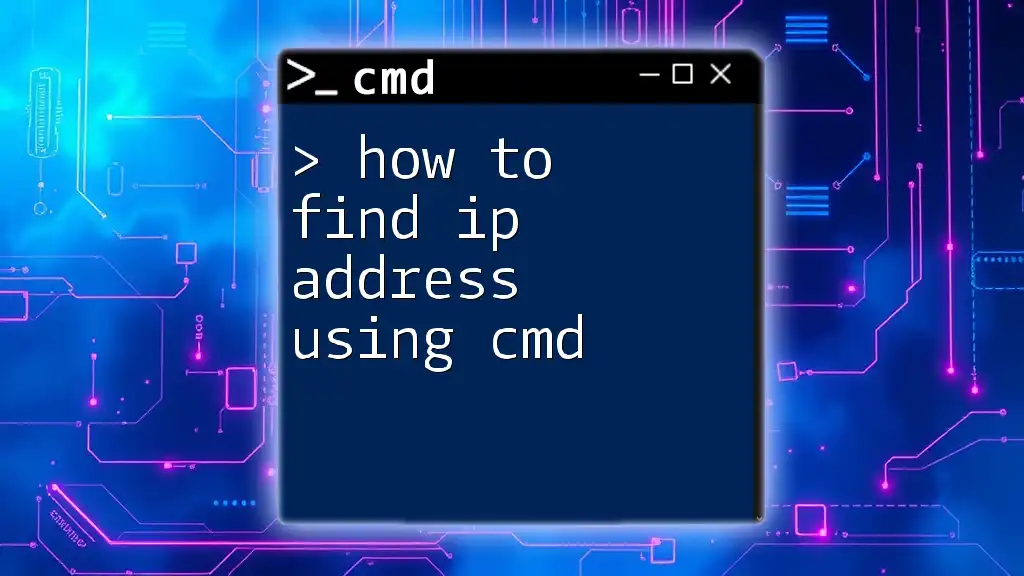
Types of IP Addresses
Public vs. Private IP Addresses
Understanding the distinction between public and private IP addresses is crucial:
-
Public IP Address: Assigned by your Internet Service Provider (ISP) and is used to identify your network on the internet. It's how the outside world sees your device.
-
Private IP Address: Used within a private network and assigned by your router. It allows devices in the same network to communicate. Examples include addresses in the ranges of 192.168.x.x and 10.x.x.x.
IPv4 vs. IPv6
There are two main versions of IP addresses in use:
-
IPv4: The most common version, consisting of four sets of numbers (e.g., 192.168.1.1). Due to a limited number of addresses, it is gradually being replaced.
-
IPv6: A newer version designed to address the shortage of IPv4 addresses. It consists of eight groups of hexadecimal numbers and can provide an almost infinite range of IP addresses.
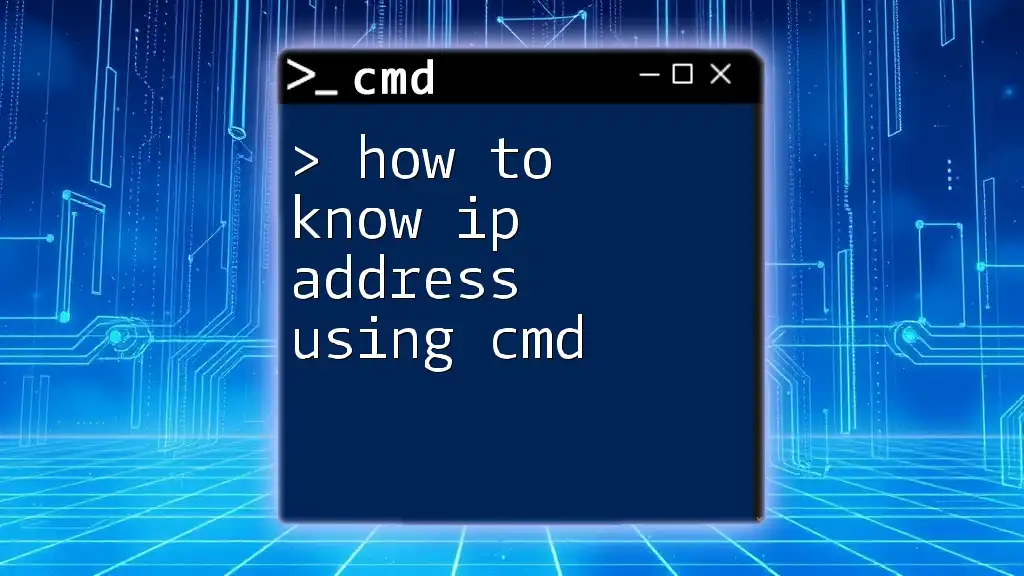
Accessing CMD
How to Open Command Prompt
Opening CMD is straightforward. Here’s how to access it based on your Windows version:
- Windows 10/11: Type "cmd" in the search bar and hit Enter.
- Windows 8: Right-click on the start button and select Command Prompt.
- Windows 7: Click on the Start menu, navigate to All Programs, then Accessories, and choose Command Prompt.
Once opened, you’ll see a window that resembles a black screen with white text—this is your command line where you can enter commands.
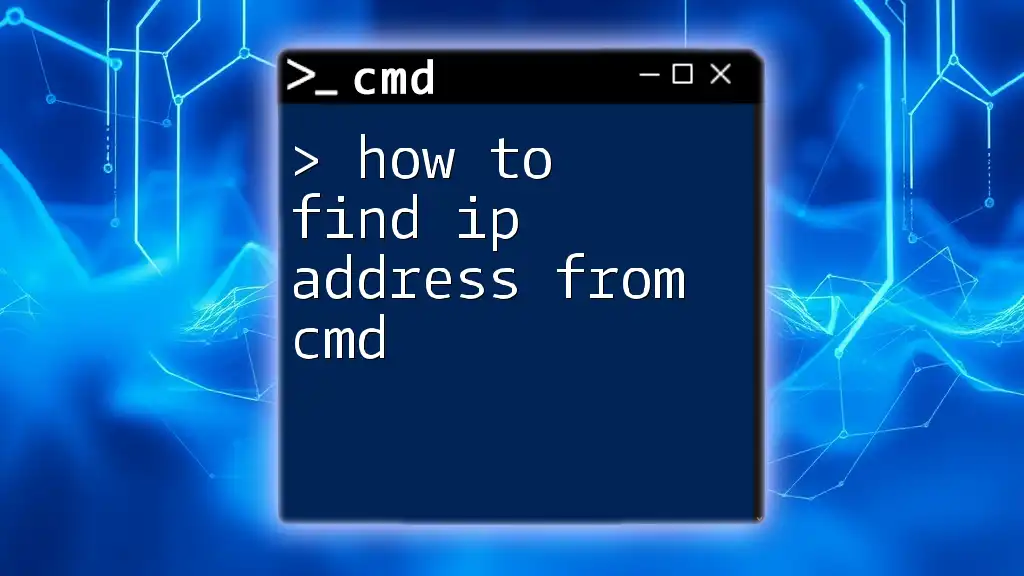
Finding Your Local IP Address
Using the `ipconfig` Command
To find your local IP address, the `ipconfig` command is your go-to option. It provides a list of network configurations.
Code Example:
ipconfig
When you run this command, you will see several sections of information corresponding to your network adapters. Look for the section labeled Ethernet adapter (for wired connections) or Wireless LAN adapter (for wireless connections).
Interpreting the Output
Within the output, find the line that says IPv4 Address. This is your device's local IP address.
For example, the output might look like this:
Ethernet adapter Local Area Connection:
Connection-specific DNS Suffix . : yournetwork.local
IPv4 Address. . . . . . . . . . . . : 192.168.1.5
Subnet Mask . . . . . . . . . . . . . : 255.255.255.0
Default Gateway . . . . . . . . . . . : 192.168.1.1
Here, 192.168.1.5 is your local IP address.
Detailed Breakdown of the `ipconfig` Output
Ethernet Adapter vs. Wireless LAN Adapter
The Ethernet adapter section will appear if you are connected via a wired connection while the Wireless LAN adapter section will appear for wireless connections. Each section provides relevant information to help you identify your connection type and settings.
Identifying Your Private IP Address
When looking for a private IP address, focus on addresses that fall within the ranges specified for private networks (e.g., 192.168.x.x, 10.x.x.x). These addresses allow devices on the same network to communicate with one another without exposing them directly to the internet.
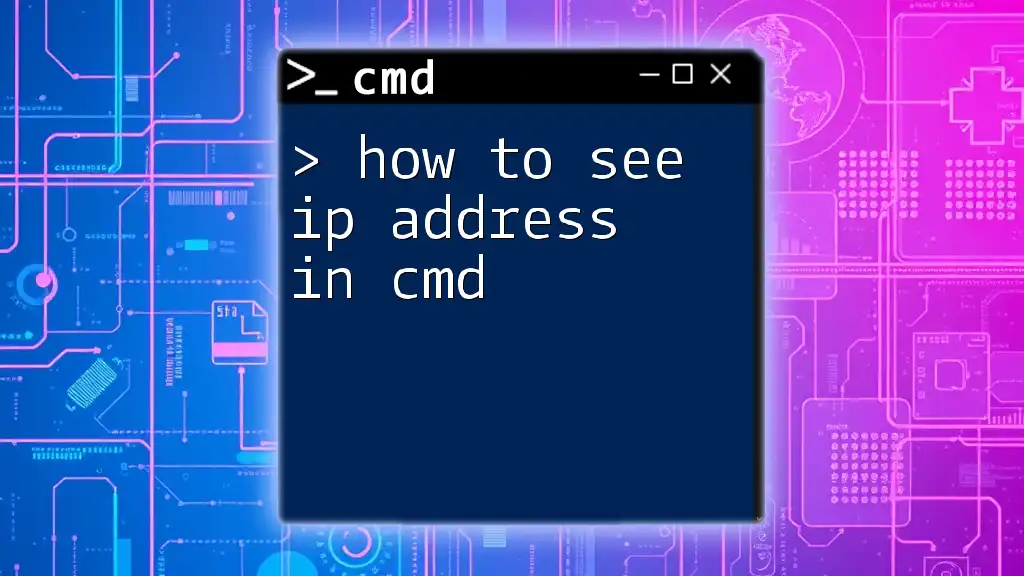
Finding Your Public IP Address
Using CMD with Online Services
To find your public IP address using CMD, you can utilize commands that query online services. One such command is `nslookup`.
Code Example:
nslookup myip.opendns.com resolver1.opendns.com
After executing this command, you'll receive a response that includes your public IP address.
Using the `curl` Command
If you have `curl` installed, you can quickly retrieve your public IP address with the following command:
Code Example:
curl ifconfig.me
This command directly queries a web service designed to return your public IP address, providing a simple, no-fuss way to access this information.
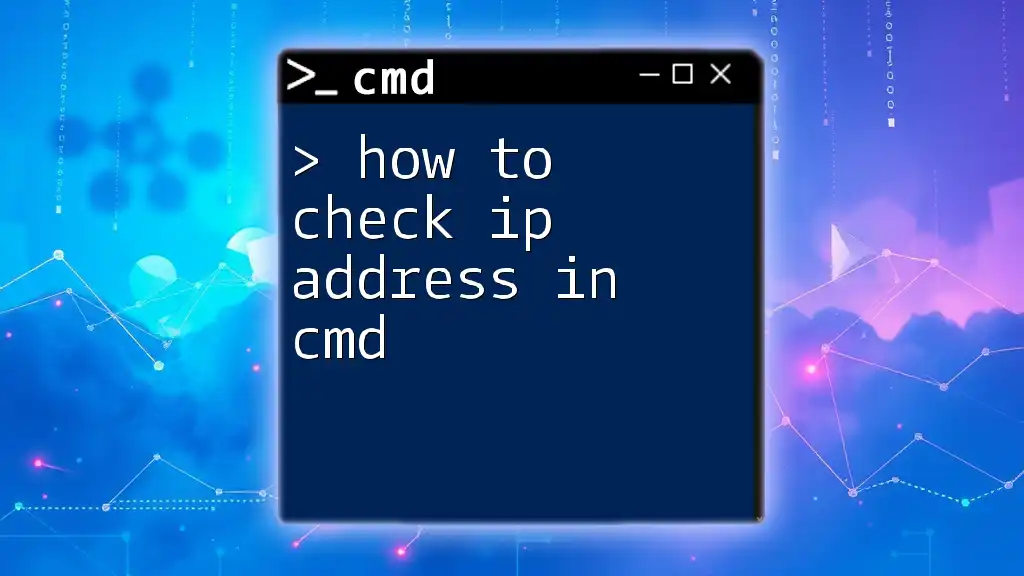
Additional CMD Commands for Networking
Using `ping` Command for Troubleshooting
The `ping` command helps test network connections and can reveal your local network's functionality or identify issues.
Code Example:
ping google.com
This command sends packets to Google's servers and measures the time it takes for the request to return. If your internet connection is working, you'll see responses indicating that packets are successfully transmitted.
Using `tracert` for Trace Routing
The `tracert` command allows you to trace the path that packets take to reach a destination. This can be particularly useful for diagnosing connectivity issues.
Code Example:
tracert google.com
By executing this command, you'll receive a list of all the network hops (routers) between your computer and Google's server. Understanding the trace helps identify any points of failure along the route.
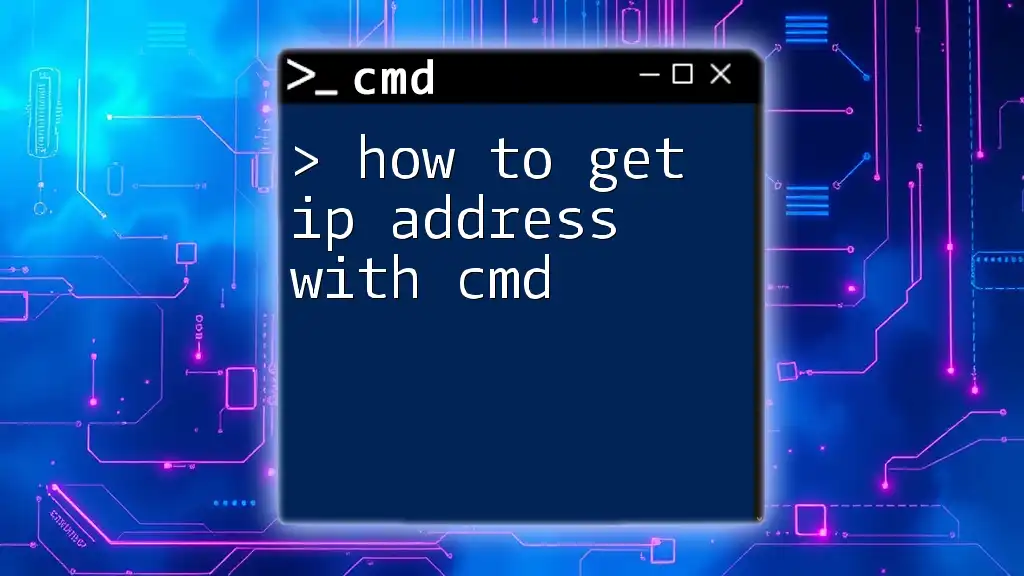
Common Issues and Troubleshooting
If the Command Prompt does not Open
If CMD fails to open, check if there are restrictions on your user account. You can access CMD through the Task Manager by pressing Ctrl + Shift + Esc, then navigating to File > Run new task. Type in "cmd" and check the box for "Create this task with administrative privileges" before hitting Enter.
When Results are Not as Expected
If you retrieve unexpected results or cannot find your IP address, consider checking your network connections. Ensure your computer is connected to a network and verify that your Ethernet cable is functioning correctly or that your Wi-Fi connection is active.
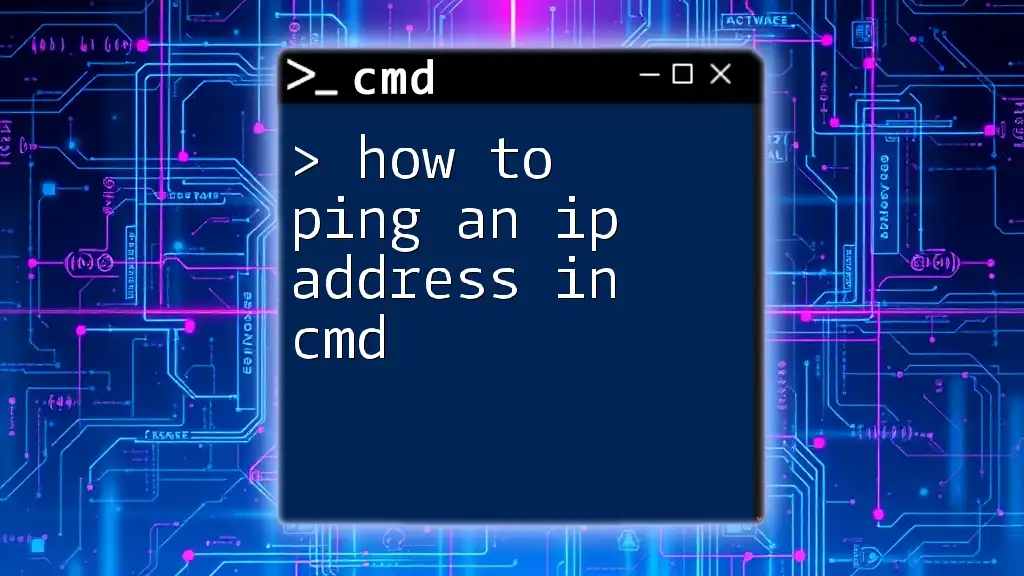
Conclusion
In this guide, we've navigated through the steps of how to find the IP address using CMD, covering both local and public IP addresses, the use of essential commands like `ipconfig`, `nslookup`, and more. CMD is not just a tool for tech enthusiasts; it can greatly enhance your network management skills regardless of your experience level.
I encourage you to explore and practice these commands. The more familiar you become with CMD, the more efficient you'll be in handling all your network-related tasks. If you have any questions or additional tips, feel free to share your experiences!

